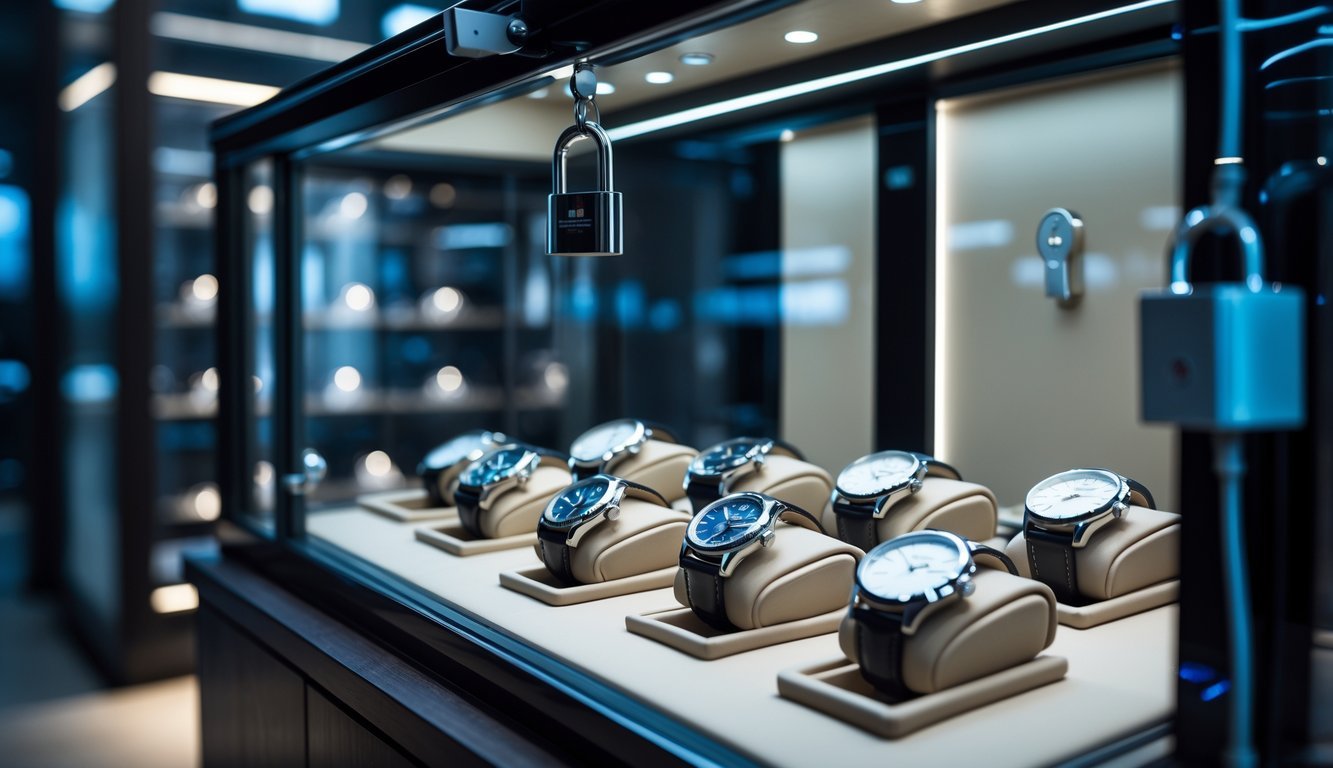Watch collectors are facing more risks from theft these days, but smart security measures can keep valuable timepieces safe from criminals who target luxury items. The best way to protect your watches is to use both physical security, like safes and alarms, along with proper insurance coverage that covers increases in value. Too many collectors just trust their homeowners insurance, but that usually only covers about $1,500 for jewelry.
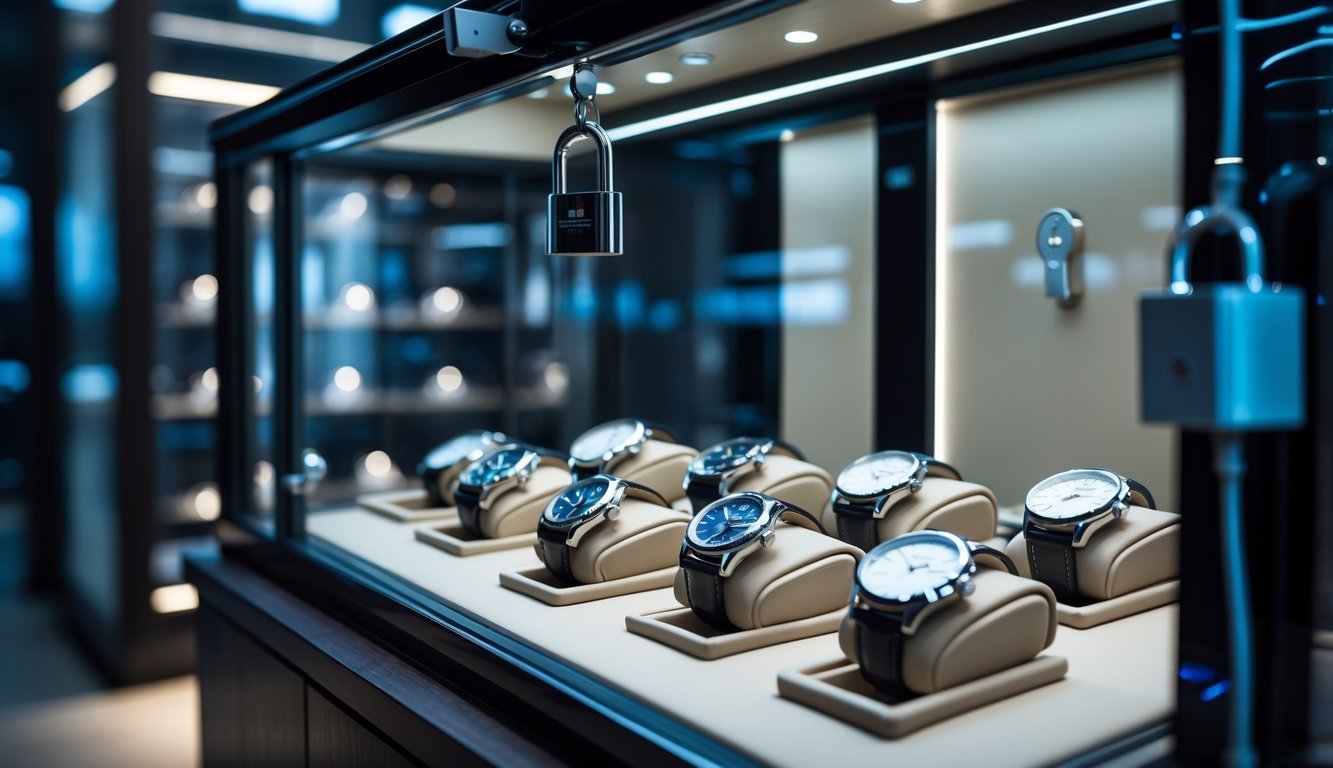
Samsung is encouraging users to activate anti-theft features since theft is on the rise globally, and honestly, watch collectors should probably think the same way about their collections.
Your watches need layers of protection that cover both physical and digital risks.
You’ll want to secure your collection at home, look into specialized insurance, and keep your personal info safe from identity thieves.
Sometimes, just storing your watches properly and documenting everything can turn a disaster into a manageable insurance claim.
Key Takeaways
- Use safes, alarms, and secure storage to make it tough for thieves to steal your watches
- Get insurance that covers the real value of your collection, not just the basic homeowners policy
- Protect your personal info and online accounts so identity thieves can’t target you
Physical Security Measures for Your Watch Collection
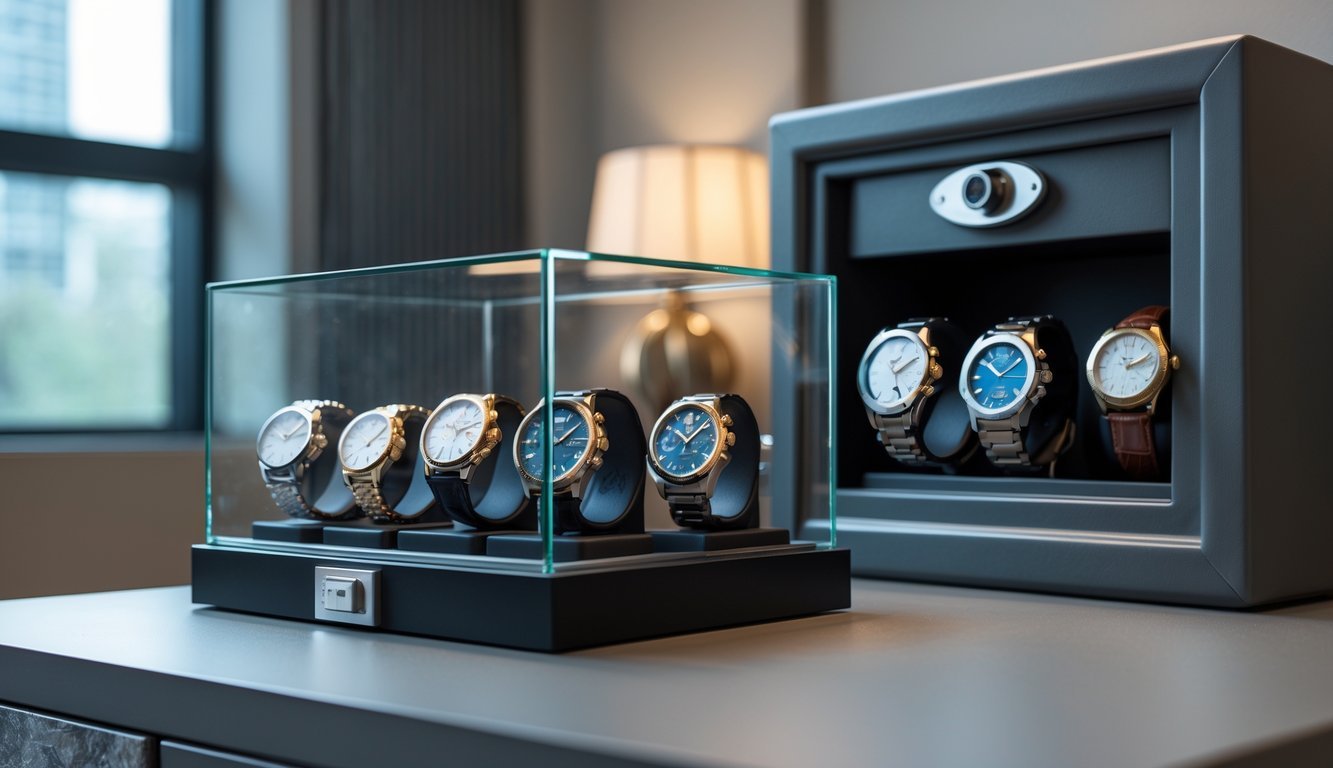
If you want to keep your watches safe, you need more than just one line of defense.
Secure storage, good monitoring systems, and smart placement all play a role.
These steps make your collection much harder to steal, which is what you want.
Securing Your Watches in a Safe
A quality safe gives your watch collection solid theft protection.
Fire-resistant safes rated for at least 1 hour at 1700°F protect your watches from both theft and fire.
Pick a safe that weighs over 750 pounds, or bolt it down.
Lightweight safes are just too easy for thieves to carry away.
Key Safe Features:
- Electronic locks with backup keys
- Humidity control to keep moisture out
- Watch cushions or rolls for safe storage
- Interior lighting so you can see inside
Put your safe in a closet or a basement corner.
Don’t leave it in a spot where it’s visible from outside.
If you have very valuable pieces, bank safety deposit boxes are the safest option.
Sure, you’ll only have access during business hours, but you won’t have to worry about home break-ins.
Installing Home Security Systems
Modern security systems add more layers to your defense.
Motion sensors, door contacts, and glass break detectors can alert you right away if someone tries to break in.
Essential System Components:
- 24/7 monitoring with police response
- Smartphone alerts so you’re always in the loop
- Backup cellular connection in case your internet goes down
- Indoor cameras pointed at storage areas
Smart doorbell cameras let you check out visitors before you open the door.
Thieves sometimes pretend to be delivery drivers or service people.
Window sensors help spot break-in attempts.
Put them on every ground floor window and anywhere someone could climb up.
Professional installers know how to cover all the right spots with sensors.
DIY systems sometimes miss key areas.
Concealing High-Value Collections Strategically
Hiding your watches well keeps them out of sight from thieves and even guests.
Don’t leave expensive timepieces where people can see them from the street or main living areas.
Effective Concealment Methods:
- Bedroom closets behind clothes
- Home office desk drawers with locks
- Basement storage rooms
- Attic spaces (make sure there’s climate control)
Change up which watches you wear out.
If you always wear the same pricey watch, it’s easy for someone to notice.
Skip social media posts showing off your collection.
You never know who’s watching, and photos can give away both what you own and where you keep it.
Set up decoy storage with less valuable items.
Leave obvious watch boxes in the master bedroom, but stash your best pieces somewhere else.
Try using several smaller storage spots instead of one big display.
If a thief finds one, you won’t lose everything.
Digital and Identity Protection Against Watch Theft
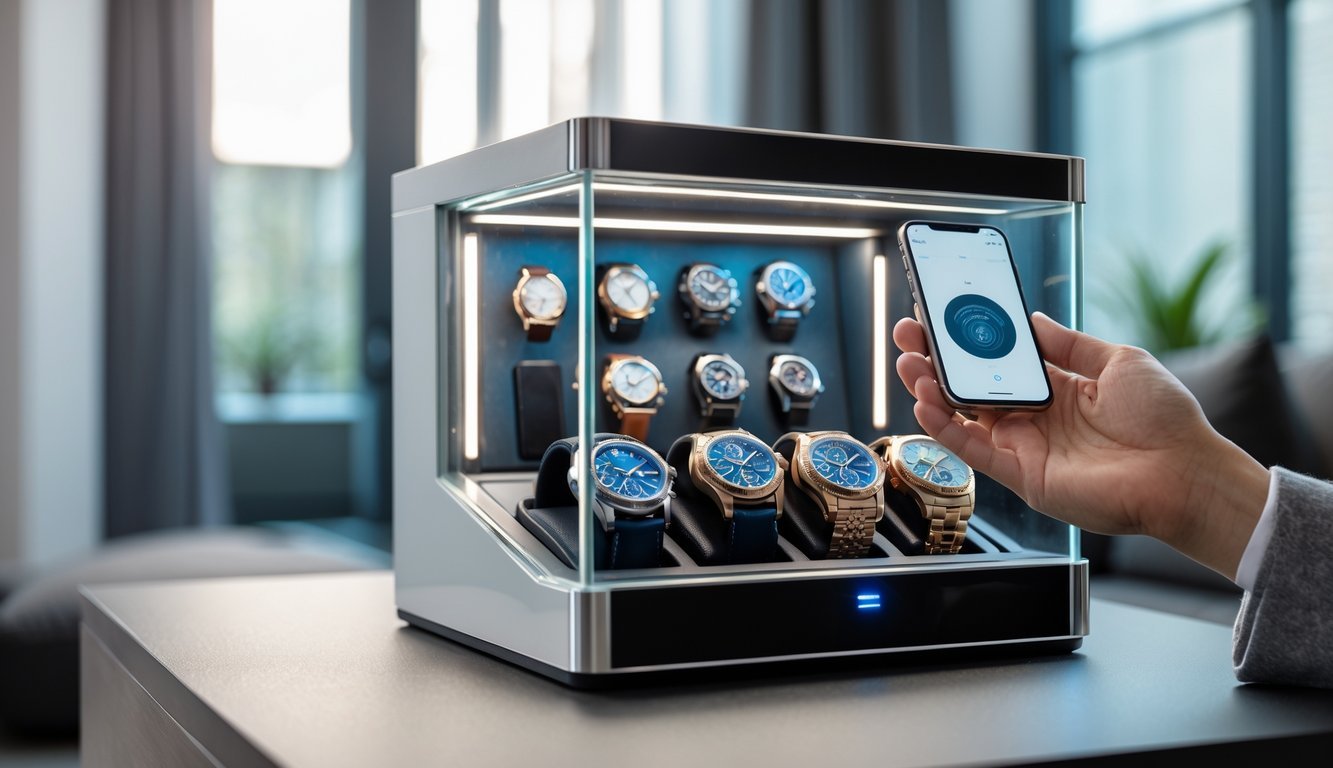
Thieves don’t just break into homes anymore.
They also target collectors online, looking for personal info to find your watches or steal your identity.
Protecting your personal data, using identity monitoring services, and watching for data breaches can really help.
Protecting Personal Data Linked to Ownership
Your watch collection details end up on all sorts of digital platforms.
Social media, insurance docs, and receipts all leave a digital footprint that thieves might use.
Take down watch photos from public social media. Instagram and Facebook posts with your watches just make you a target.
Make your accounts private and clean up old posts.
Lock down your home WiFi with strong passwords. A password manager can help you keep track.
Turn on two-factor authentication for any account with financial or personal info.
Store your digital receipts and docs in secure, encrypted cloud storage. Don’t leave them on devices that use public WiFi.
Use a VPN when you visit watch-related sites. Public WiFi can leak your browsing history, but a VPN hides it.
Install antivirus and ad blockers on your devices.
Malware can steal passwords and info, which is a nightmare if you own valuable watches.
Implementing Identity Theft Protection Services
Identity theft protection services keep an eye on your personal info and alert you if something weird pops up.
These services can stop criminals from using your identity to buy stuff or get into your accounts.
Pick a service that monitors everything. Aura plans start at $12/month and include things like auto title monitoring and data removal.
LifeLock and Identity Guard have similar plans.
Turn on social security number monitoring. This way, you’ll know if someone tries to open accounts using your SSN.
Set up credit monitoring with all three bureaus. Equifax, Experian, and TransUnion each keep their own files, so check all of them.
Look into family plan options. You can protect everyone in your household, which stops thieves from going after your family to get to your collection.
Check your identity theft insurance coverage. Most of these services include insurance to help with the costs if your identity gets stolen.
Monitoring for Data Breaches and Fraud Alerts
When data breaches happen, criminals may get your info and target you.
Staying alert helps you react quickly if your data leaks.
Put fraud alerts on your credit reports. Just call one of the bureaus and they’ll notify the others.
This makes creditors confirm your identity before opening new accounts.
Sign up for data breach notifications. If a company you use gets hacked, change your passwords right away.
Check your credit reports every month. You can get free reports from each bureau every year.
Look for accounts or inquiries you don’t recognize.
Go through your bank and credit card statements weekly. Thieves sometimes start with small charges to test a stolen card.
Report anything odd immediately.
Use cybersecurity tools for ongoing protection. The IRS is even warning people about identity theft and pushing for better digital security.
Set up alerts for big transactions or changes.
Most banks and credit cards let you get texts or emails for suspicious activity.
Frequently Asked Questions
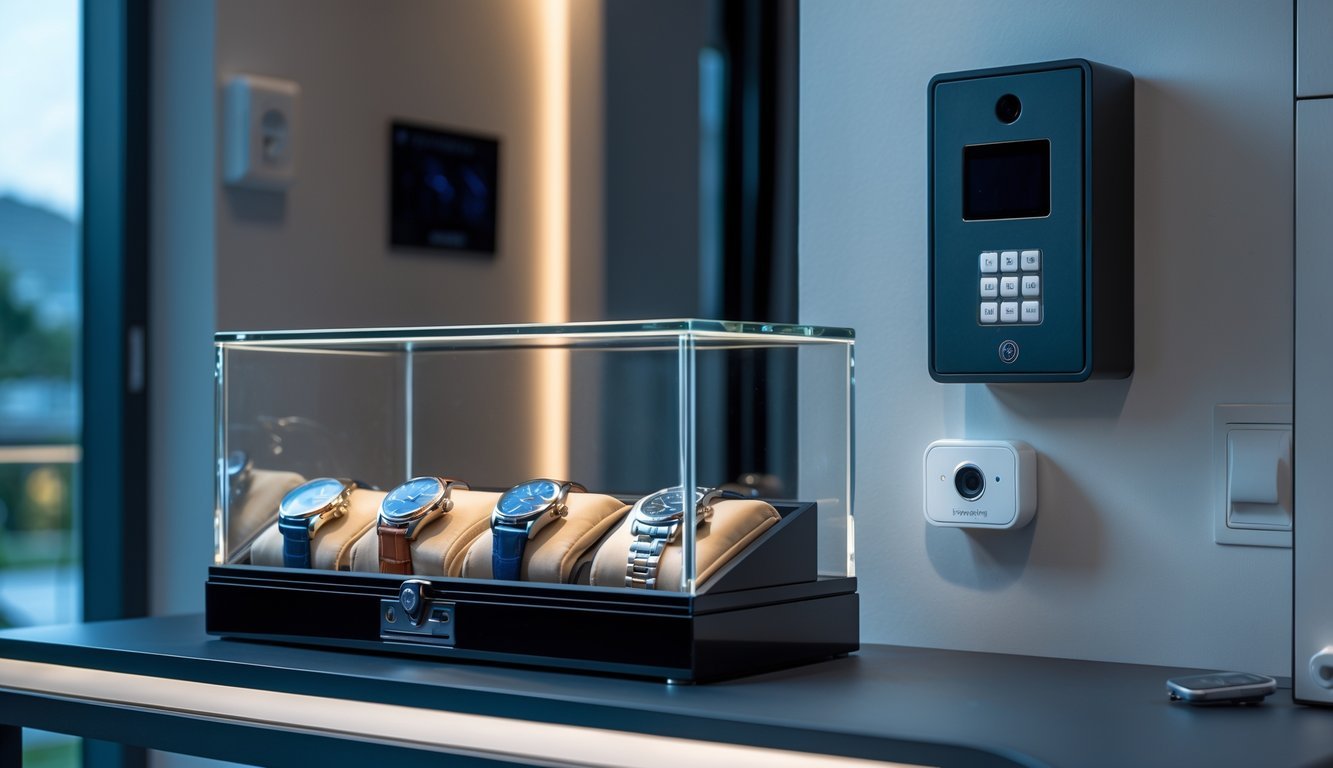
Watch collectors run into unique security issues that need specific solutions.
Good storage, the right insurance, and authenticating your watches are all key.
What are effective ways to secure a luxury watch collection in the home?
Get a high-quality safe that’s rated for jewelry, with both fire and burglary protection.
Look for electronic locks and watch-friendly compartments.
Keep your collection private.
Don’t put watches near windows or talk about them on social media.
Consider a home security system with motion sensors and cameras where you store your watches.
Many systems send phone alerts if there’s a break-in.
Store watches in different spots instead of keeping everything together.
If one place gets compromised, you won’t lose everything.
Can you recommend any insurance options for high-value watches to mitigate theft risk?
Scheduled personal property coverage through your homeowner’s insurance can protect individual watches for their full value.
This coverage usually gives you broader protection than basic policies.
Specialty collectors insurance is designed for watch collections.
These policies often cover you worldwide and might not have deductibles.
Document each watch with professional appraisals, serial numbers, and clear photos.
Insurance companies need this for claims.
Review your coverage every year, since watch values can go up a lot.
Homeowner’s policies usually have low limits for jewelry and watches.
What best practices should be followed to avoid watch theft while traveling?
Travel with just one watch and leave the rest at home, locked up.
Wear something less flashy that won’t draw attention.
Use hotel safes for short-term storage, but make sure the safe is actually bolted down.
Some hotel safes are easy to steal if they aren’t installed properly.
Don’t wear expensive watches in high-crime areas or on public transit.
Check out crime rates and common scams before you go.
Look into travel insurance that covers jewelry and watches.
Standard travel insurance usually has low limits for valuables.
How can I verify the authenticity of a watch to ensure it hasn’t been stolen?
Check the serial number with the manufacturer if you can.
Some brands keep lists of stolen watches, and authorized dealers can check for you.
Use professional authentication services for a thorough check.
These experts can spot fakes and may have access to stolen watch databases.
Ask for original paperwork like warranties, receipts, and certificates of authenticity.
Honest sellers should have no problem providing these.
Be wary of deals that seem way too good, or sellers who won’t meet in person.
Stolen watches often pop up at bargain prices for a quick sale.
What types of safes are best suited for storing expensive watches securely?
Pick safes with Underwriters Laboratories (UL) ratings for both fire and burglary protection.
Look for at least a TL-15 burglary rating and one hour of fire protection.
Make sure the safe is big enough for your watch boxes and winders.
Some document safes are just too small.
Get a safe that weighs at least 750 pounds or bolt it to concrete.
That way, thieves can’t just carry it out.
Choose safes with both electronic and mechanical locks.
If one fails, you’ll still have a backup way in.
How do anti-theft devices for watches work and which ones are recommended?
You can find GPS tracking devices built right into watch bands or cases, letting you keep tabs on your watch’s location.
These trackers usually send location info through cellular networks straight to your phone.
Smart security tags attach directly to the watch case and will set off alarms if someone tries to move the watch without your say-so.
People often use these in display cases or for short-term storage.
Tamper-evident seals and locks make it tough for someone to swipe your watch without you noticing.
These are handy when you’re traveling or need a safe spot for your watch for a bit.
Some collectors even put together decoy collections with really convincing replicas to throw off would-be thieves.
This trick works best if you also stash your real watches safely.


